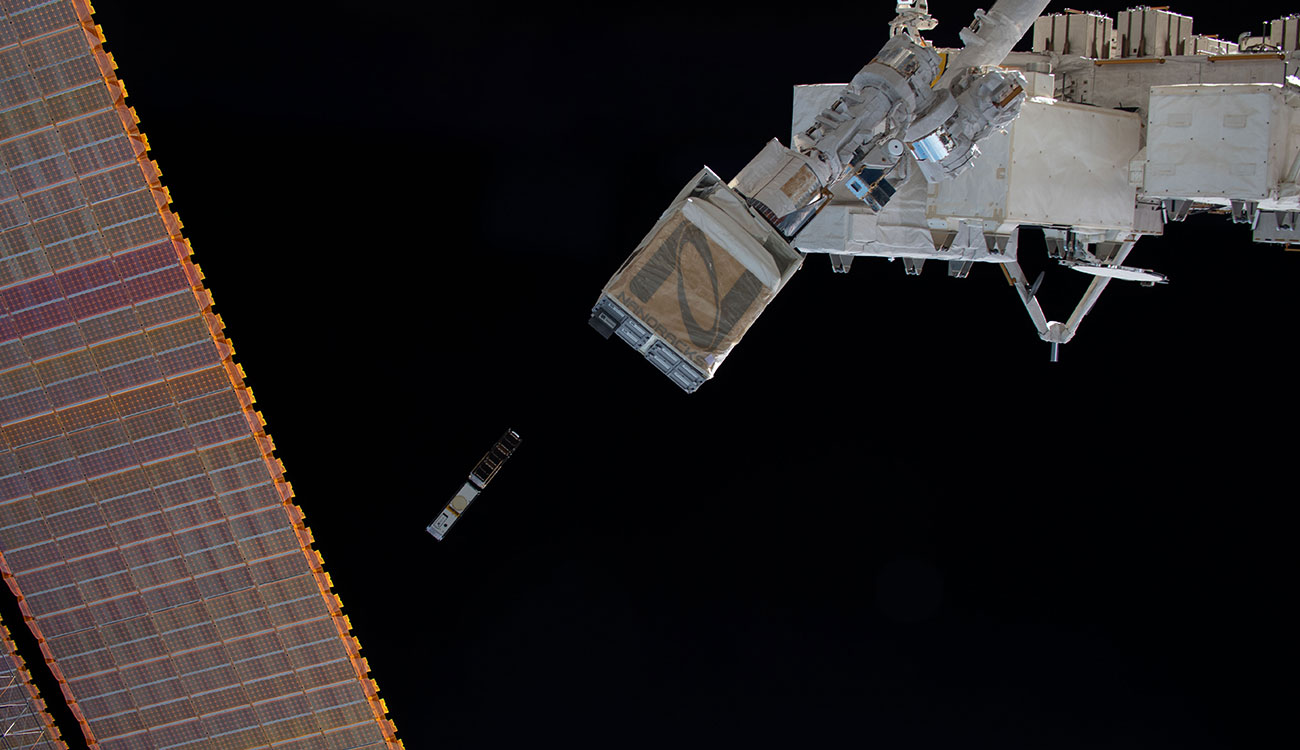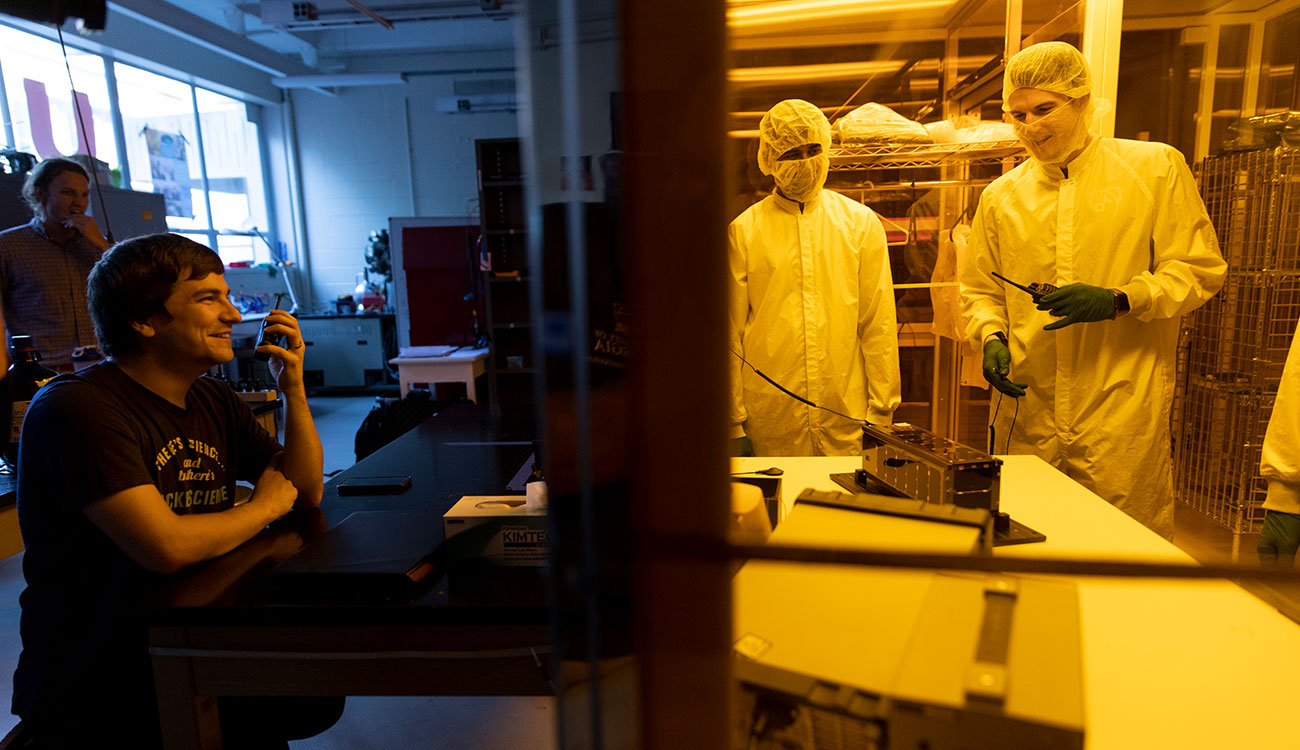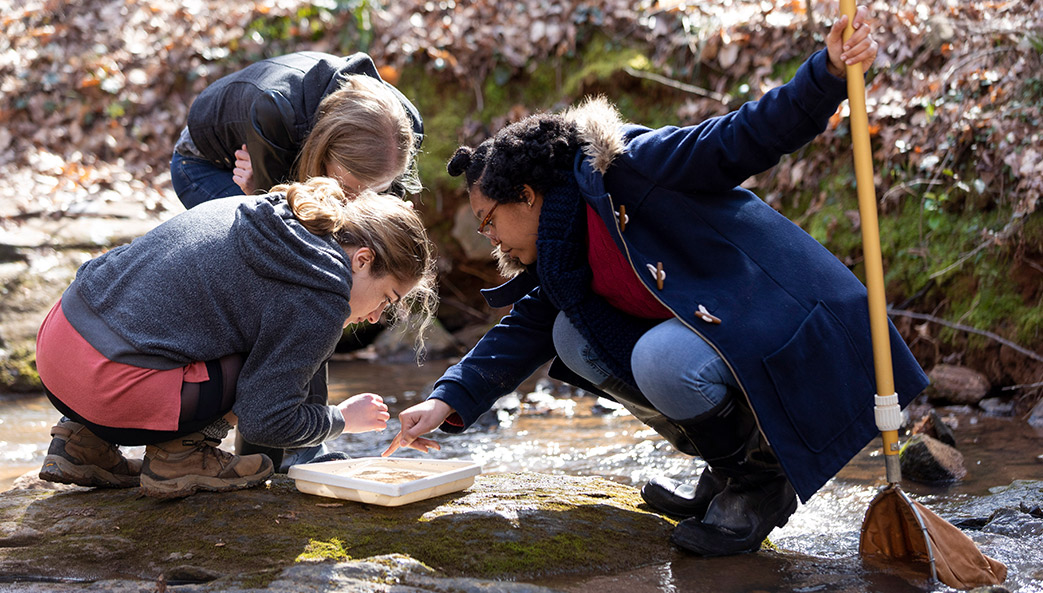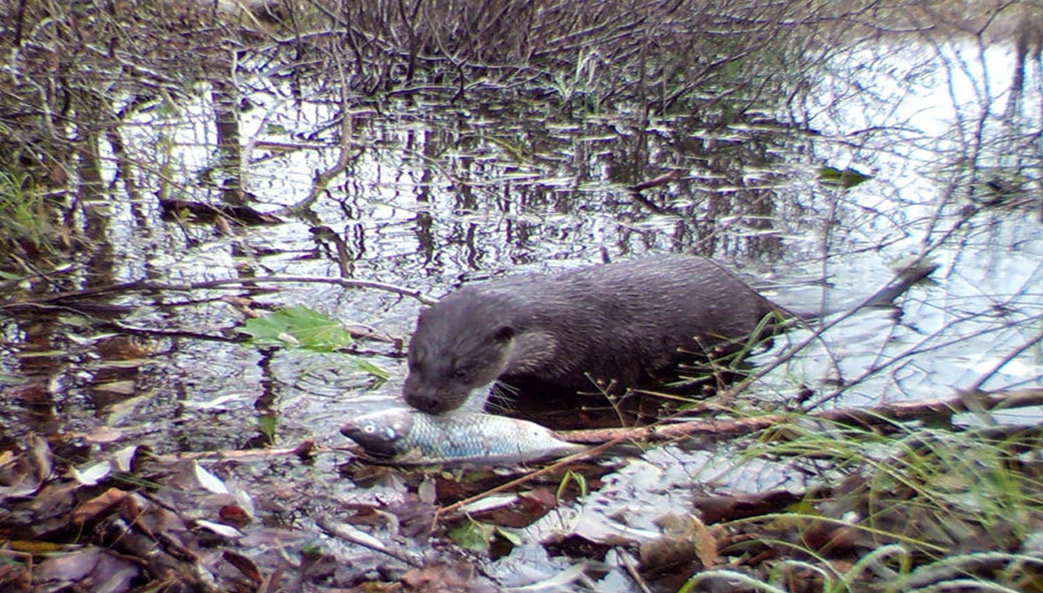“The most valuable lesson I took from the lab was how to lead people and appreciate how people work together. I used to think I’d do better if I was working alone, but I’m no longer like that. It does, indeed, take multiple people to build a satellite.”
– Alex Lin, senior computer systems engineering major
Photo by Amy Ware
While building satellites, the team also builds interpersonal communication skills and bonds with one another. Throughout her time in SSRL, Lin said she learned how to lead and work with a group.
“The most valuable lesson I took from the lab was how to lead people and appreciate how they work together,” said Lin, who served as SPOC’s systems engineer until its liftoff and now serves as the systems engineer for MOCI. “I used to think I’d do better if I was working alone, but I’m no longer like that. It does, indeed, take multiple people to build a satellite.”
While many of the students in the lab come from an engineering or computer science-related major, it truly is a multidisciplinary effort, said David Cotten, a researcher in UGA’s Department of Geography and associate director of the lab.
“Our students know how to communicate,” said Cotten, principal investigator for MOCI. “If there is an advertising major, for instance, eating their lunch next to the team working on the mechanical design of the satellite, they may ask, ‘Why are you doing this?’ Having someone who can talk outside of their major creates a much stronger engineer, scientist or researcher. When they go work for a company, they’re not going to work with only people who had the same major in college—they have to communicate with everyone.”
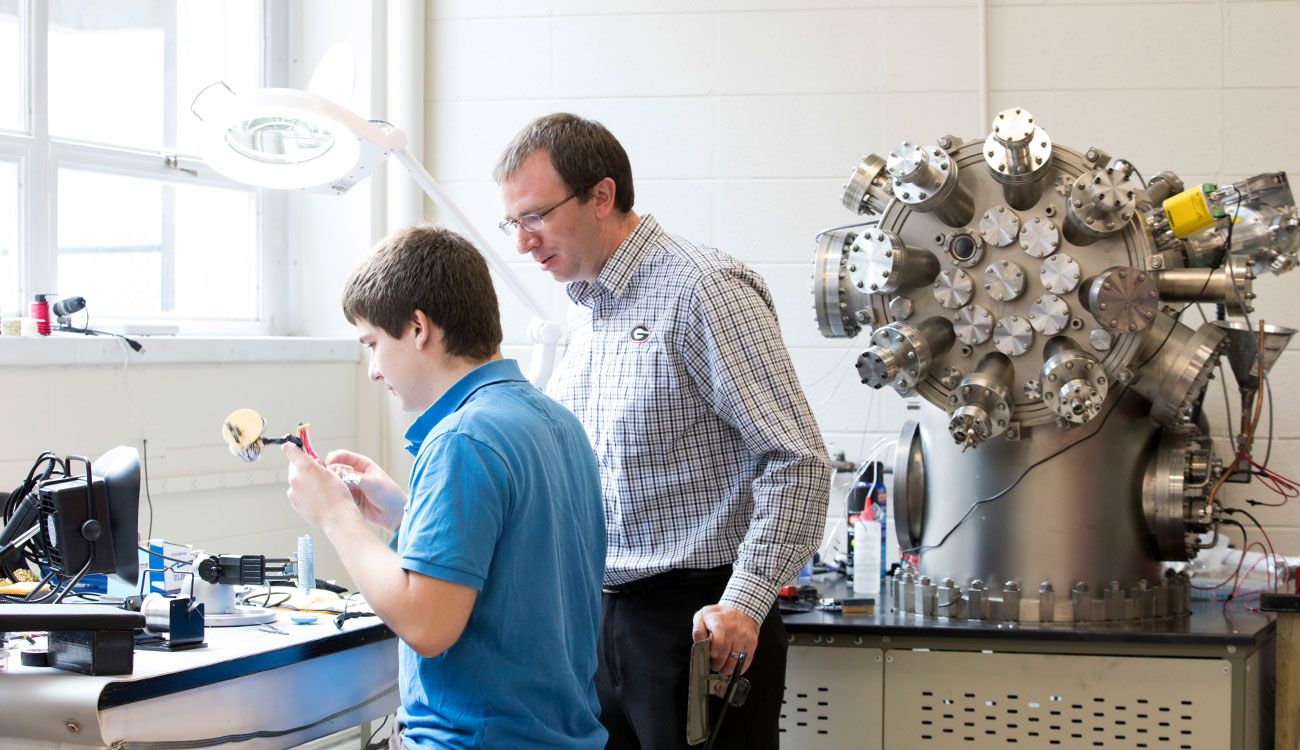
With a long list of alumni since its inception, many of the lab’s former members now work for prestigious companies and organizations, such as Boeing, NASA and Northrop Grumman.
Caleb Adams, one of the original students who founded the lab, now works for NASA, writing software for satellites. Graduating from UGA with a master’s degree in computer science earlier this year, Adams said he directly attributes his job at NASA to his time in the SSRL, where he learned many of the skills needed for his current role.
“Nothing catches me off guard,” Adams said. “If someone’s like, ‘Hey, we need you to integrate this satellite or test this component,’ I’m like, ‘OK, this isn’t the first time I’ve done this.’ I feel comfortable jumping into it, and that’s 100% the reason why NASA hired me.”
Adams was instrumental in getting SSRL off the ground. The lab officially formed in 2016 with eight faculty members and 15 undergraduate students, but unofficially it started a year prior with a group of hackers. Led by Adams, a team of UGA students found success at Virginia Tech’s Hackathon, creating a remote-operated telescope and placing first in the competition in 2015.
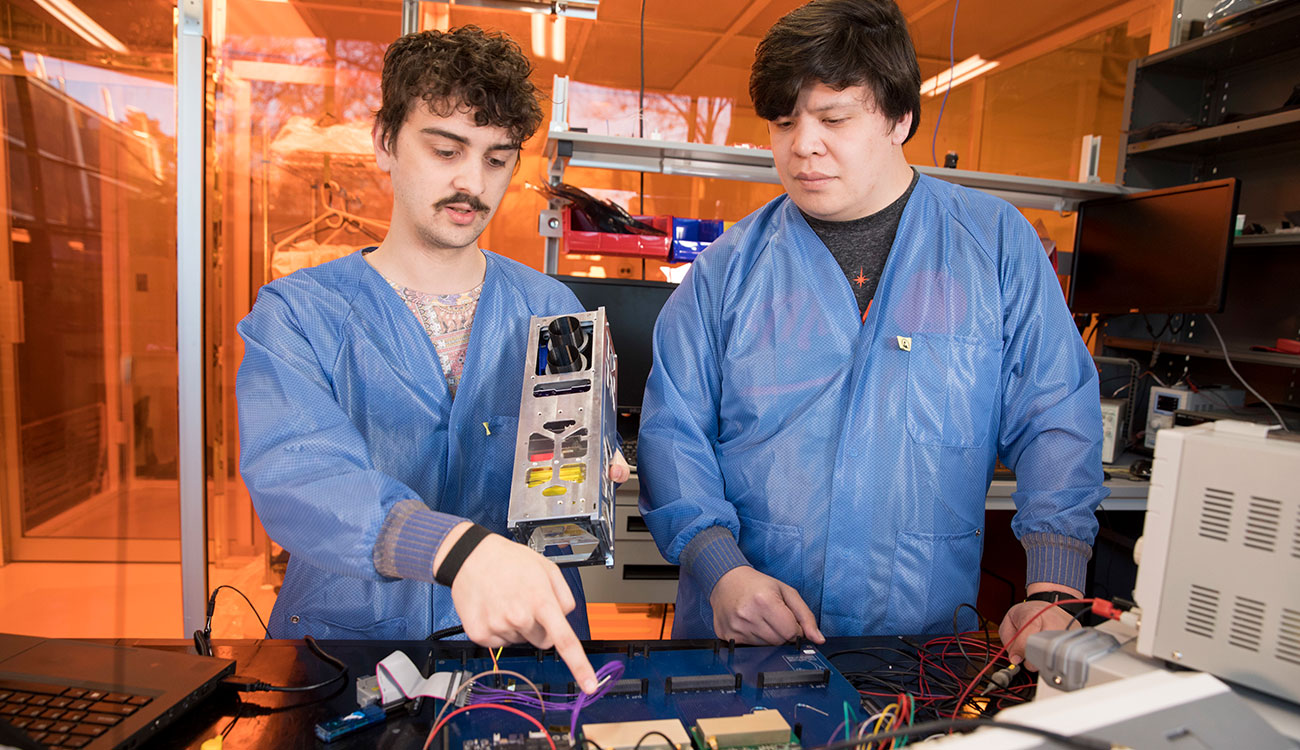
Pairing their successful invention with a fascination for space, Adams and his fellow students posted flyers around STEM buildings on UGA’s campus and spoke at engineering club meetings to find students to form a team to build a sensor.
Coincidentally, faculty in UGA’s Department of Geography were looking to put up their own sensor at around the same time. Its researchers made use of existing NASA satellites to collect climate and weather data, but they knew placing a satellite of their own in space—one they could control—would benefit their data collection process. Cotten said he and his colleagues learned they could receive funding from NASA through its Undergraduate Student Instrument Project to accomplish their goal if they worked with students.
“Out of the blue and sheer luck, some undergraduate students at UGA were already trying to build their own satellite,” Cotten said. “Neither of the groups knew what the other was doing, and the students just asked if we had any advice on how to build a satellite.”
The faculty and students teamed up, writing the initial proposals for SPOC and MOCI. The collaborators received funding from NASA, forming the lab with a three-pronged mission of bringing national and international recognition to UGA through its development of cutting-edge technology, training undergraduate students in STEM-related fields and teaching the steps involved in designing, building and testing space hardware.
From the first satellite designs drafted in the living room of Adam’s house to the end of his time at UGA, Adams said he learned how to build healthy relationships with his peers while working toward a goal.
A student-produced video detailing the lab’s work during the 2018-2019 academic year.
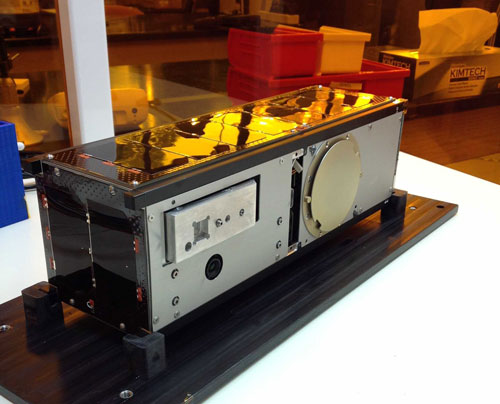
Considering no one in the lab had experience building satellites, “there was a lot that could go wrong” in the beginning, said Deepak Mishra, a UGA geography professor and director of the SSRL. Years later, there’s no sign of the lab slowing down, with SPOC in space and the lab working toward a planned 2021 liftoff for MOCI.
Initially worried about relinquishing control of operations, Adams said he’s proud of the wide ownership of the lab’s creations, in which former and current members feel a deep connection to SPOC and its future endeavors.
“I do genuinely believe the lab will survive for years to come,” Adams said. “People who weren’t there in the beginning now have the same feeling of ownership, which makes me really happy.”
From the first satellite designs drafted in his living room to the end of his time at UGA, Adams said he learned how to work with peers toward a common goal.
“You have to trust other people, that they’re going put in the work to get it done right,” Adams said. “You build healthy relationships between people, so you can feel comfortable criticizing one another without taking it personally, leaving all the work in the lab, and going out afterwards and enjoying yourself.”
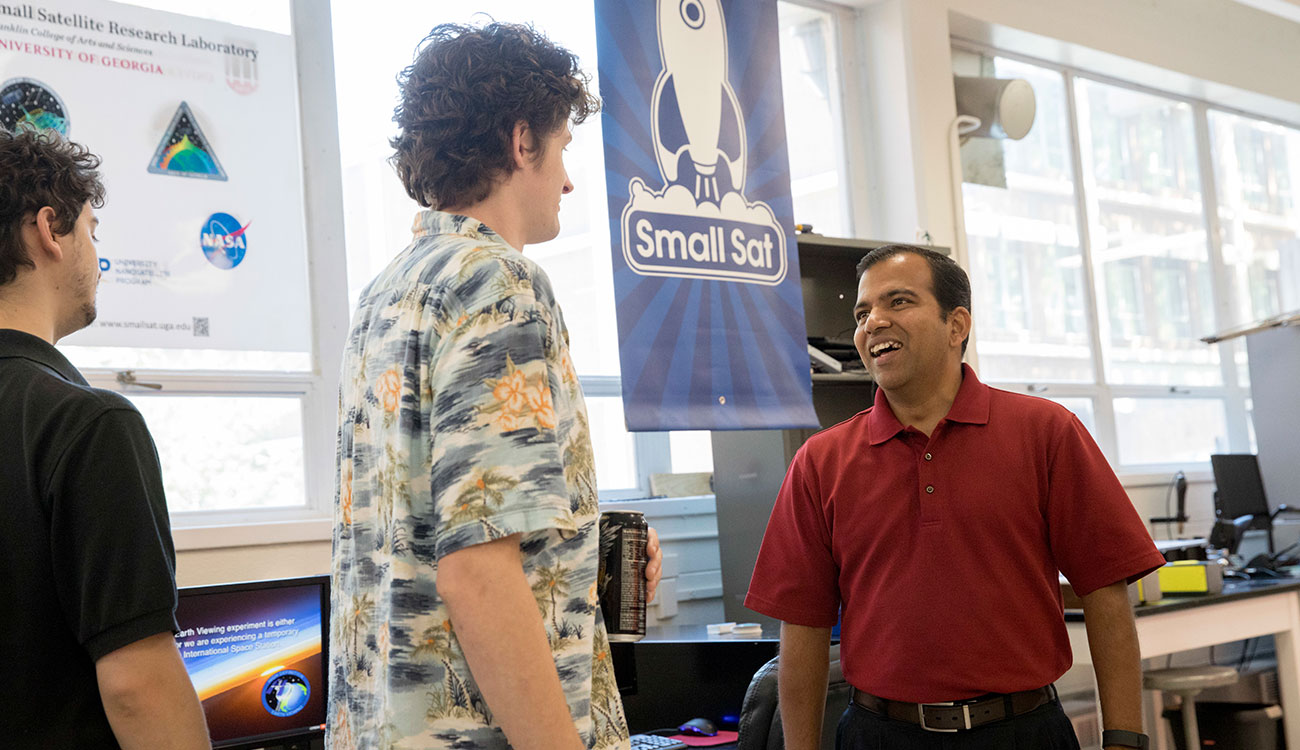
The SSRL also is building the components for a small satellite for Let’s Go to Space, a nonprofit in the Athens area with a mission to inspire the future generation of aerospace engineers and lower the barrier to enter space. The nonprofit works with K-12 communities, and its satellite is set to launch in 2022.
Recently signing an offer with Northrop Grumman as an embedded software engineer, Lin said she plans to help the lab’s future members by documenting everything she has learned before wrapping up her time at UGA, hoping to “keep the momentum going” and aid in their future endeavors.
“No one knows the future, but what I’m going to say is the lab is going to be known for building and designing small satellites that are good for ecosystem science applications,” said Mishra, principal investigator for SPOC. “What can we do that is different and unique that makes us stand out? That’s where we should be focusing.”
The current cohort of the SSRL consists of nearly 40 undergraduate and graduate students, as well as faculty members from various UGA departments. In the future, Mishra said he hopes the lab undertakes a bigger project, growing the lab’s membership of master’s and Ph.D. students and postdoctoral researchers.
“It’s fun, that’s for sure,” Cotten said. “They work for each other. That’s what drives everyone, and everybody wants the lab to succeed for the benefit of themselves but also for their lab members. When I go in there and see all these people working together, working late nights, it makes me want to go even harder and put in more time.”
“It’s sometimes stressful to balance classes as you get more involved with the lab,” Lin said. “That’s always a challenge, but I don’t regret my time in the lab at all. Doing something you care about, with people you care about, is empowering.”
